One of my bad habits in the field is forgetting to remove the teleconverter (tc) from my lens when the subject is a little too close (or forgetting to switch to my other camera with a shorter focal length lens). In the excitement of a sudden and unexpected opportunity I guess I go into “automatic mode” and it just slips my mind sometimes. That’s exactly what happened with this fledgling Yellow-headed Blackbird, so many of these shots are too tight or have cut off body parts. But I thought the behavior was interesting anyway.
I was photographing adult male blackbirds when suddenly this very recently fledged youngster popped up in the cattails right in front of me. At first I thought it was just curious about me and my big truck but that turned out not to be the case.
It apparently wanted a better vantage point to watch out for its mom bringing in breakfast. It perched calmly on the cattail until its sharp eyes picked up the parent coming in with food and then it immediately began to react.
Believe me, this young bird put up quite the fuss when the parent approached.
On this trip the female brought in a beak-full of insect larvae. I find it interesting that for most of the year this species consumes grain and weed seeds almost exclusively but during the nesting season they switch to aquatic insects. I presume that the reason for this is the high demand such fast growing chicks must have for protein.
The female would feed the youngster and then quickly leave (I don’t blame her – the begging commotion of this chick was irritating…). Here the young bird is watching for her to come in again.
And from the reaction of the chick it wasn’t difficult for me to tell when she was approaching.
The young bird was so enthusiastic about getting its meal that I was amazed it didn’t fall off its perch as it reached out to its mother for food.
At times the female had a hard time reaching the chick from any available perch so she would occasionally…
deliver the meal while hovering in front of the fledgling.
Average clutch size for this species is 3-4 but this is the only young bird I saw. Perhaps it was the only survivor.
Ron


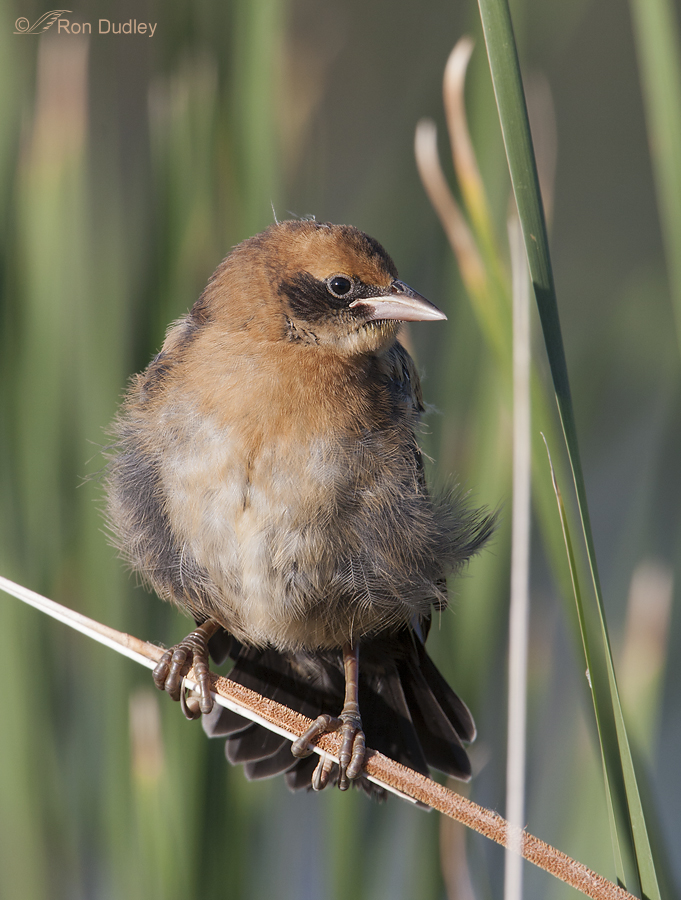
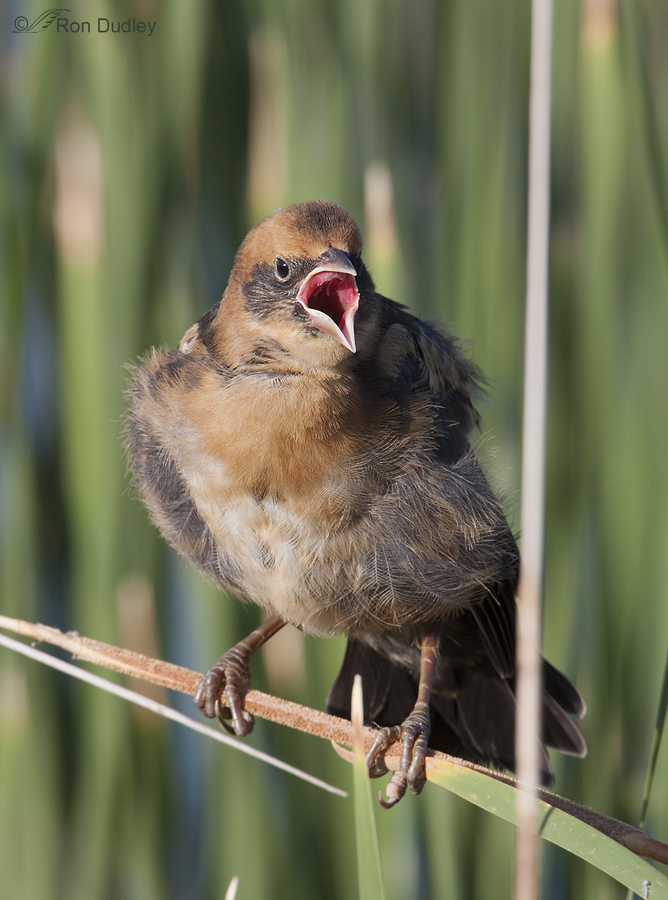
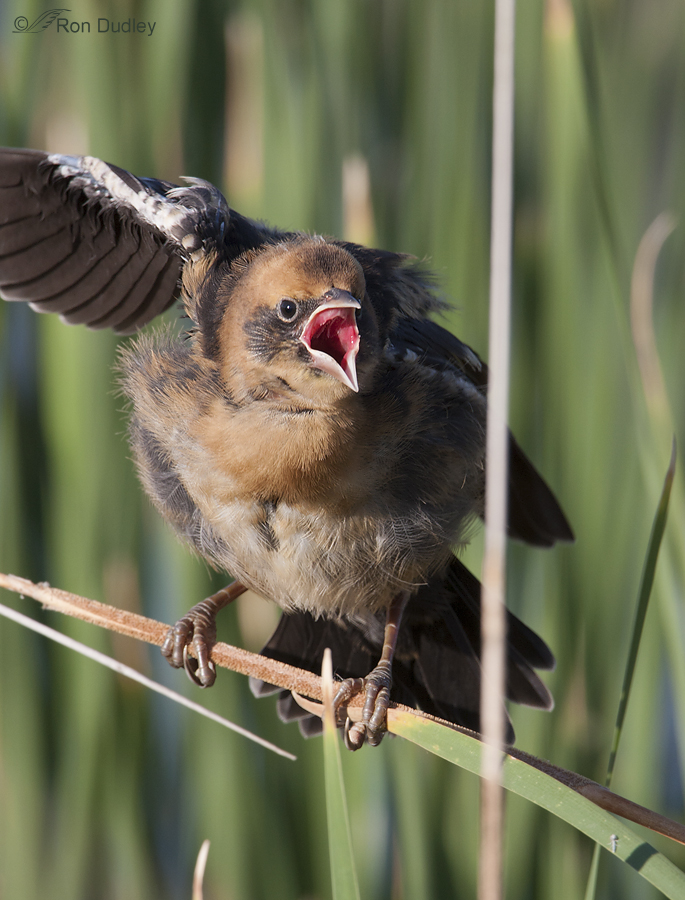
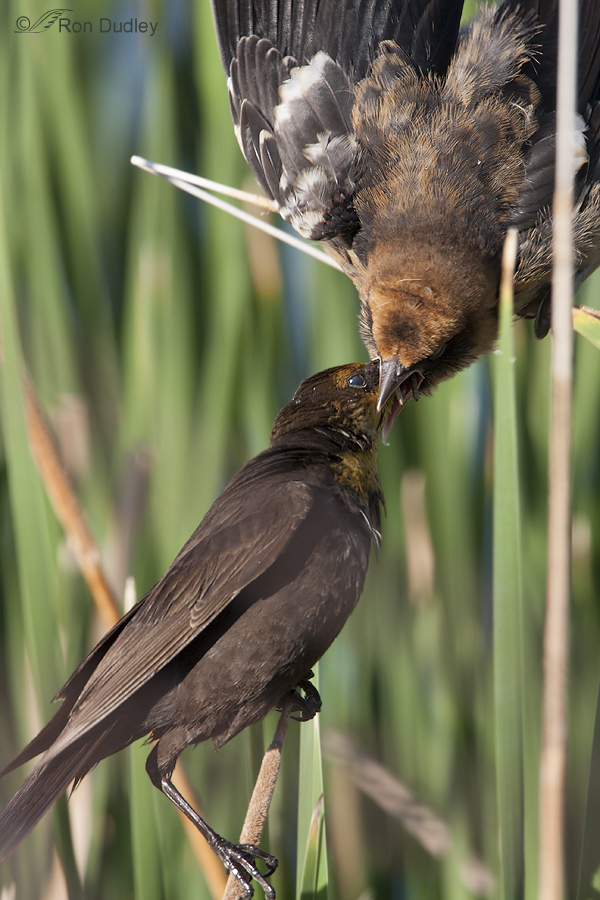
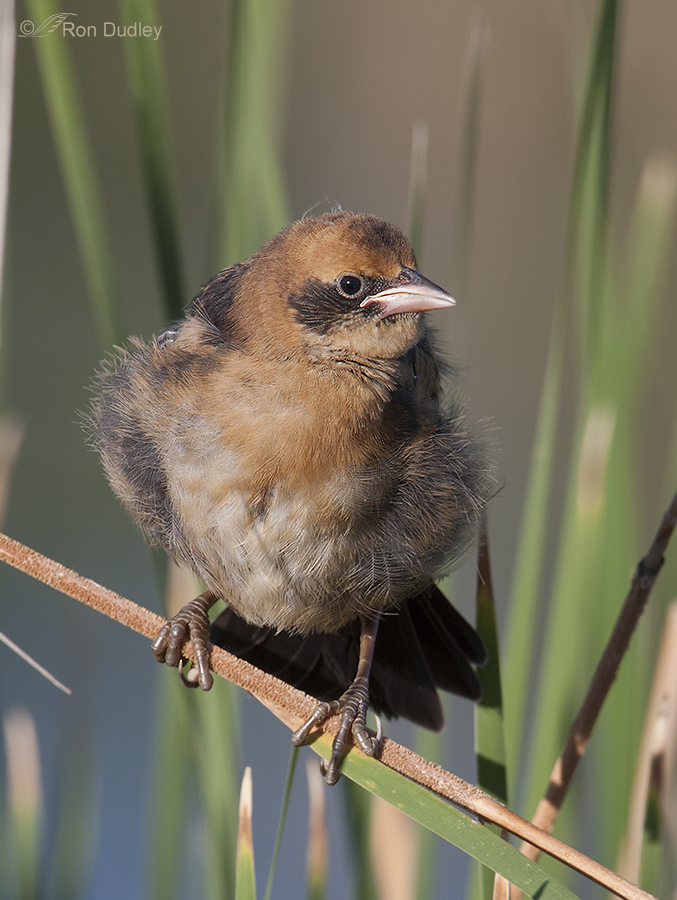
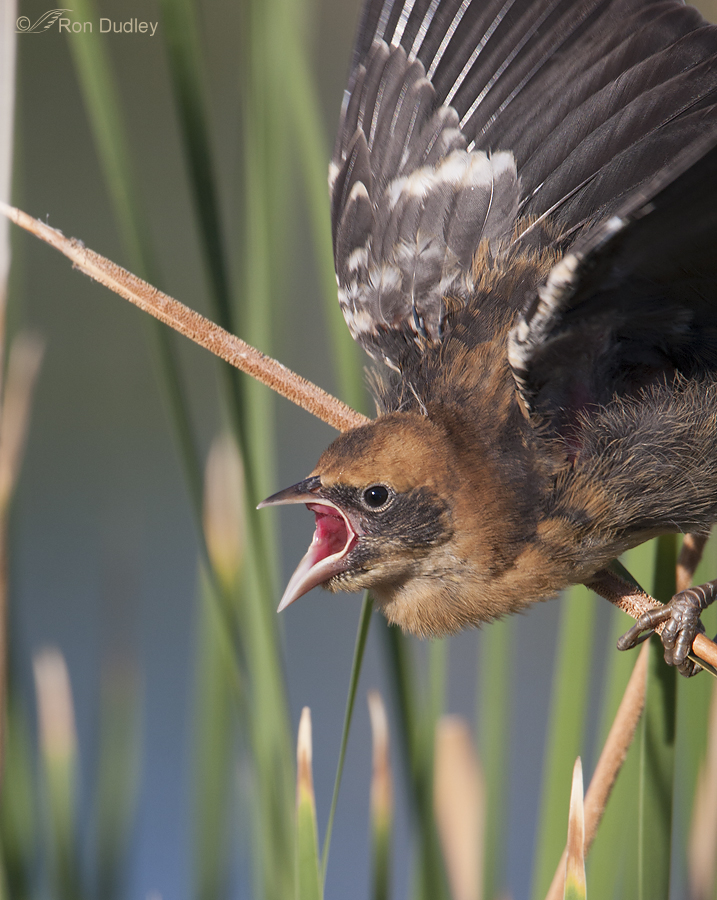
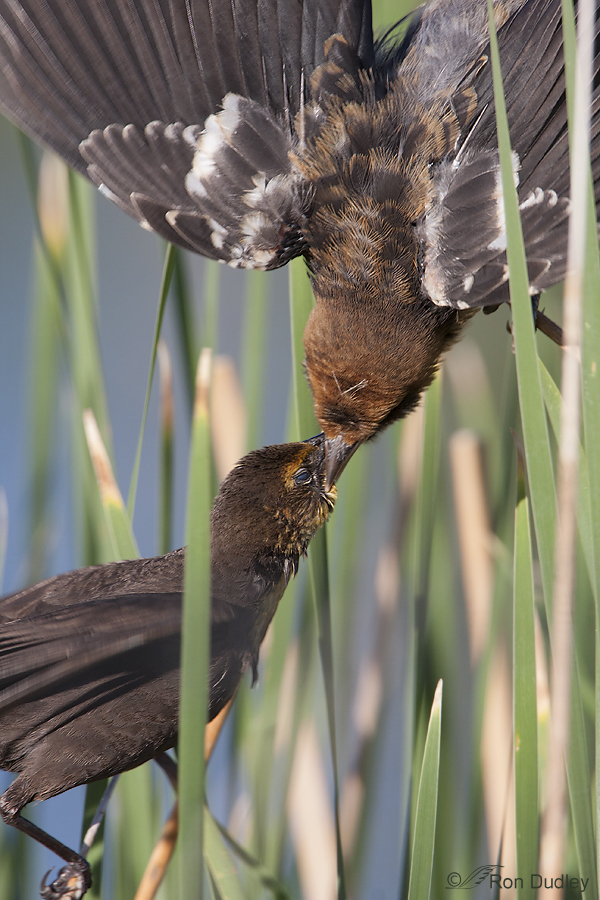
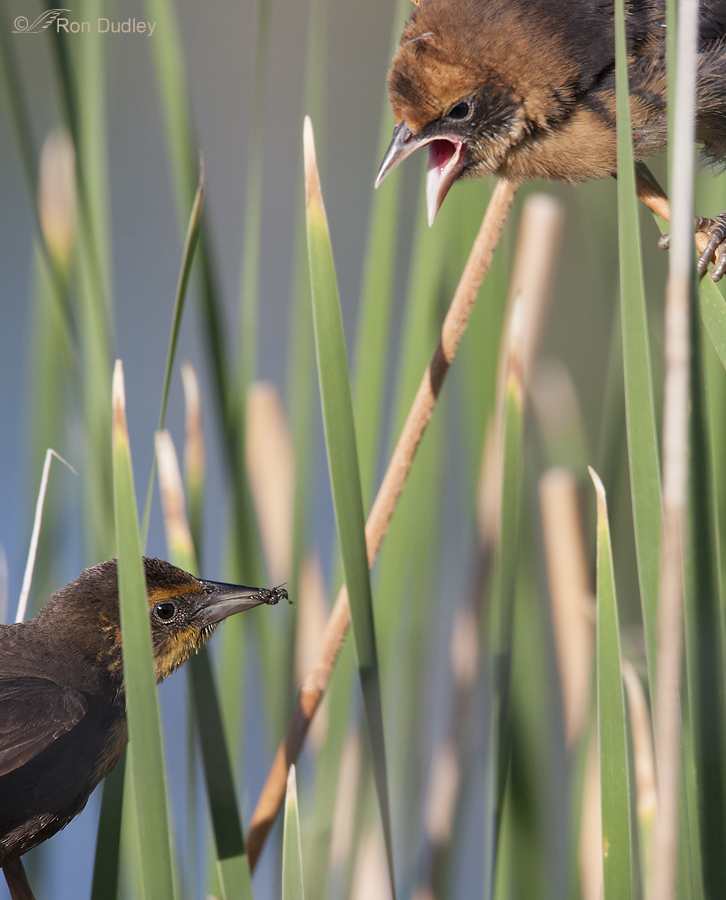
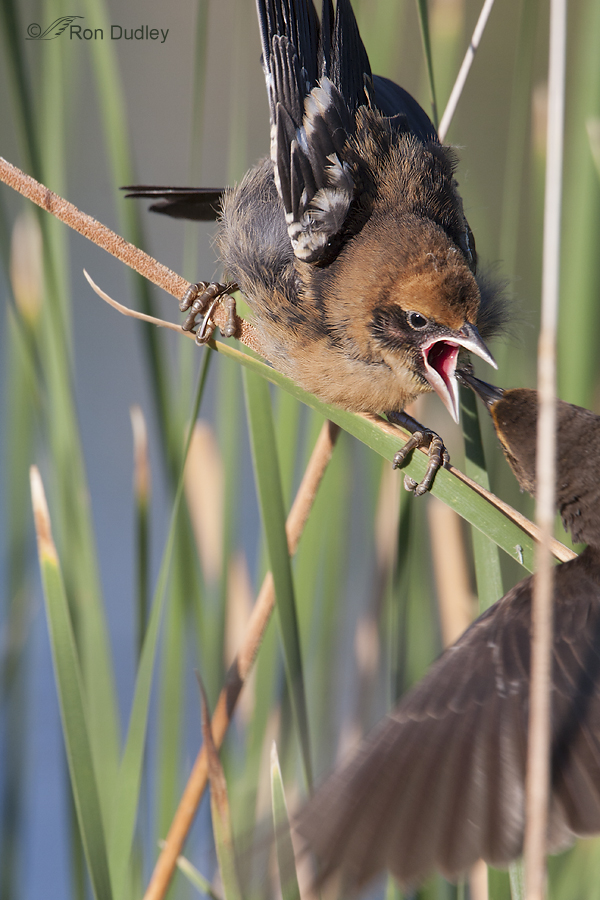
I could even see the insect in the fledges mouth.
Great photography of moving targets.
Thanks
Wonderful story and photos!
Great to see this series, Ron.
Recently fledged galahs have SUCH an irritating demanding whine. And they go on and on and on. Last season we saw an adult reach over and rap the fledgling firmly on the head. It was quiet immediately, and we all heaved a sigh of relief.
And this yellow-headed blackbird looks to be doing better than its mama on the food stakes. Wonderful sequence – thank you so much. I suspect that I might leave the lens cap on while I watched, so we are very grateful that you were more on the board than that.
This is awesome Ron! It’s so vividly depicted I can almost hear that fledgling cry out to its mom.
Your “automatic zone ” is really when you “are in the zone ” artistically. Some of your postings comment about being caught off guard with equipment,or the bird action in front of you. This brings to mine your recent swallow post ,the camera seemed upclose and tight like sports photography’s isolation shots.
Anyway , these photos here seem to speak of your desire to set up a narrative,or more to the point a short or documentary film . These are some of your best work of late. The backgrounds remind me of the paintings of Gerhard Richter ,Bravo…
Susan here spoke of angry ,Bluebirds , what about the angry Coots!!!
I love these photos! At least one of them indicates to me that it’s time for the well-known ‘angry bluebird’ photo to move over. This guy provides serious competition.
I noticed that apparent grouchy look too, Susan. I think it’s partly due to the downturned gape.
You are right, Ron, about the diet of these birds and most seed eaters during the nesting period. They DO feed almost exclusively insects to their young – as you surmise, the protein needs of the birds in this high growth period are phenomenal. If I remember from what I’ve read, there are actually digestive changes in the adult birds to help them change from seeds to insects, too, but I couldn’t swear to that.
Louise, That makes me wonder how birds like pigeons raise their young on strictly a seed diet. I wonder if the “pigeon milk” they use has protein in it secreted by the parent.
I love the tight framing and I think you have some wonderful compositions here–they lead the viewer right in to the subject– the feeding & begging. The movement created by the background and bird wings are excellent. I think these are superb.
Great, I’m glad you like them, Sharon.
All mother’s believe their babies to be beautiful, surely only a mother could love that face.
It is kind of homely, isn’t it, Janice.
What a spectacular series! Thanks’s so much for sharing them!
Thank you, Charlotte.
As always, I appreciate your picture stories.
Man on man, what sharpness you get out of that lens/lens combination.
Thanks, Gary. Yes, that lens is a great one. I do wish I had the new version that Canon came out with recently but I’ll have to wait until I win the lottery before that will be in the cards.
Wonderful series of the feeding behavior. If you had switched cameras/lenses you wouldn’t have seen the same level of detail you captured without severe cropping. In hindsight, pretty smart!
Ha! – ok then Wally, I’ll say I planned it that way!
The mom must be pretty worn out at the end of the day if she had to feed 3-4 of these little guys! That’s a lot of larvae to come up with. Come to think of it, I used to be pretty worn out at the end of the day after caring for my 3 boys too!
“Kids” are tough, Peggy – no matter the species…